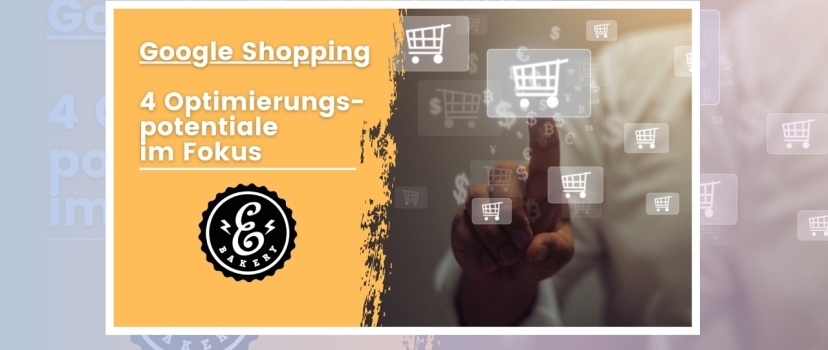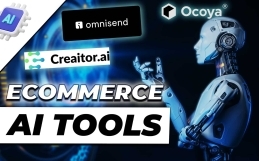Product search via Google Shopping opens up a gigantic world of consumer goods to consumers. For companies, in turn, there are attractive advertising opportunities for the targeted placement of their offerings. The optimization potential for staging products through entries and ads is enormous. This entrepreneur tip explains ways to increase your chances of success.
Complete Google Shopping Feed
As we have already explained in this example, companies need to provide Google with a data feed in order to make their products visible through Google Shopping in the first place. This feed is usually an XML file with product data. Completeness is critical for proper product presentation and acceptance by Google Merchant Center. Many companies limit themselves to the mandatory parameters. These include:
- ID – unique identifier of the product
- Title – name of the product
- Description (description) – item description
- Link – landing page to the article
- Image link – URL of the main image
- Availability – Article availability
However, it is worth specifying as many parameters as possible in order to place campaigns in the best possible way. A good example of optional, but often super important data, is the mobile link to mobile optimized landing pages. Google product category, as well as product type and dimensions, can also assist in product placement based on need.
Sales promotion on and offline with Local Inventory Ads
Businesses that sell products not only online but also in local retail stores should look into Google Local Inventory Ads. These ads can be used to promote locally available products in retail stores on Google. Consumers searching Google for relevant offers receive specific information for regional product availability and can then store locally. The certified Google Shopping agency Dreikon from Münster designs appropriate campaigns and clarifies possible advertising costs. Combinations of ads for online store and local trade are also conceivable.
Added value for searchers: Google’s Local Inventory Ads let consumers know about inventory levels, promotions, and store hours. In addition, a description of how to get there can be included to help potential customers find their way to the store. Thus, Local Inventory Ads bring real added value to search engine users and can bring additional foot traffic to businesses.
Optimize Google Shooping Ads
After setting up Google Shopping via the Merchant Center, Google Ads can be used to design campaigns for advertising. These ads offer strong optimization potential in many ways. Two suggestions:
- Showcase:
Showcase ads are ideal for displaying a selection of products for more general search queries, thereby maneuvering some prospects to the online store. An item selection with a high-quality image can make potential buyers curious and encourage them to click. - Smart:
Smart campaigns have few setting options in comparison and are suitable for presenting selected product groups or the entire product range. Smart campaigns simplify advertising, but bring some challenges. For example, different Google Shopping campaigns can compete with each other. Used successfully, it can increase reach and automate campaign management.
Landing pages under the magnifying glass
It is not uncommon for retailers to invest a lot of time and money in Google Shopping campaigns, but wonder about poor results. The advertising budget really evaporates without any significant successes being celebrated. In part, neglected landing pages and product descriptions are to blame for high online store bounce rates.
Generating many clicks via Google Shopping is only one side of the coin. Convincing as many consumers as possible to buy in your own online store is the supreme discipline. Therefore, an essential part of the Google shopping strategy must be the strategic landing page design:
- Since Google Shopping does not link to start pages or category pages, but directly to product pages, it is advisable to develop special landing pages.
- The reason: Google shopping users often have a different focus than site visitors who generally land in an online store via the search engine.
- If you want to inspire Google shopping visitors in a target group-specific way, you should integrate individual landing pages for them.
- Although the focus must initially be clearly on the clicked product, the store visitor should also see cleverly selected product suggestions as an alternative.
- For example, with the help of an AI-based product selection that is recognizable in the background. Such a combination invites browsing and increases the chance that consumers will stay in the store and ultimately buy.
The general requirements that Google officially places on landing pages can be found in the Google Merchant Center help section.
eBakery – we help you with Google Ads support
If you need support in terms of Google Ads support, eBakery is ready to help you with words and deeds. Feel free to ask us and let’s work out an individual solution for you together!
Do you have questions or need an individual offer? Do not hesitate to contact us.
- 0/5
- 0 ratings
| Very bad! | Bad | Hmmm | Oke | Good! |
|---|---|---|---|---|
| 0% | 0% | 0% | 0% | 0% |
Haben Sie Fragen oder brauchen ein individuelles Angebot? Zögern Sie nicht, uns zu kontaktieren.



















